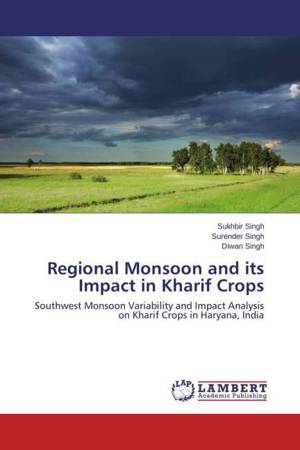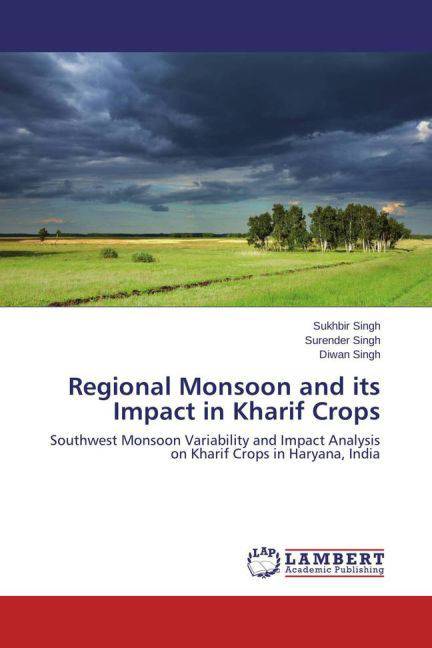
Bedankt voor het vertrouwen het afgelopen jaar! Om jou te bedanken bieden we GRATIS verzending (in België) aan op alles gedurende de hele maand januari.
- Afhalen na 1 uur in een winkel met voorraad
- In januari gratis thuislevering in België
- Ruim aanbod met 7 miljoen producten
Bedankt voor het vertrouwen het afgelopen jaar! Om jou te bedanken bieden we GRATIS verzending (in België) aan op alles gedurende de hele maand januari.
- Afhalen na 1 uur in een winkel met voorraad
- In januari gratis thuislevering in België
- Ruim aanbod met 7 miljoen producten
Zoeken
Regional Monsoon and its Impact in Kharif Crops
Southwest Monsoon Variability and Impact Analysis on Kharif Crops in Haryana, India
Sukhbir Singh, Surender Singh, Diwan Singh
Paperback | Engels
€ 53,95
+ 107 punten
Omschrijving
Despite all the scientific attempts that have been made until now, the monsoon has continued to be a complex system with many unresolved questions, perplexing and baffling at times. Many questions regarding its onset, strengthening, advance and revival from the break conditions have continued to be unresolved. Both spatial and temporal rainfall variability influences agricultural productivity and sustainability of a region. Recent analysis of rainfall over the Northern Hemispheric land areas since the mid-nineteenth century has indicated significant increase of rainfall in mid latitudes and concurrent decrease in low latitudes. The agro-climatic regional planning applied to agriculture and allied sector is essentially resource based planning wholly dependent on monsoon variability in India, with inherent spatial variability of monsoon rainfall, there would always be some areas of deficient rains even in the best monsoon years (some areas of flood even in worst monsoon). Truly, the Indian agriculture has been described as a great 'gamble in the monsoons'.
Specificaties
Betrokkenen
- Auteur(s):
- Uitgeverij:
Inhoud
- Aantal bladzijden:
- 108
- Taal:
- Engels
Eigenschappen
- Productcode (EAN):
- 9783838371771
- Verschijningsdatum:
- 16/03/2015
- Uitvoering:
- Paperback
- Afmetingen:
- 150 mm x 220 mm
- Gewicht:
- 168 g

Alleen bij Standaard Boekhandel
+ 107 punten op je klantenkaart van Standaard Boekhandel
Beoordelingen
We publiceren alleen reviews die voldoen aan de voorwaarden voor reviews. Bekijk onze voorwaarden voor reviews.









